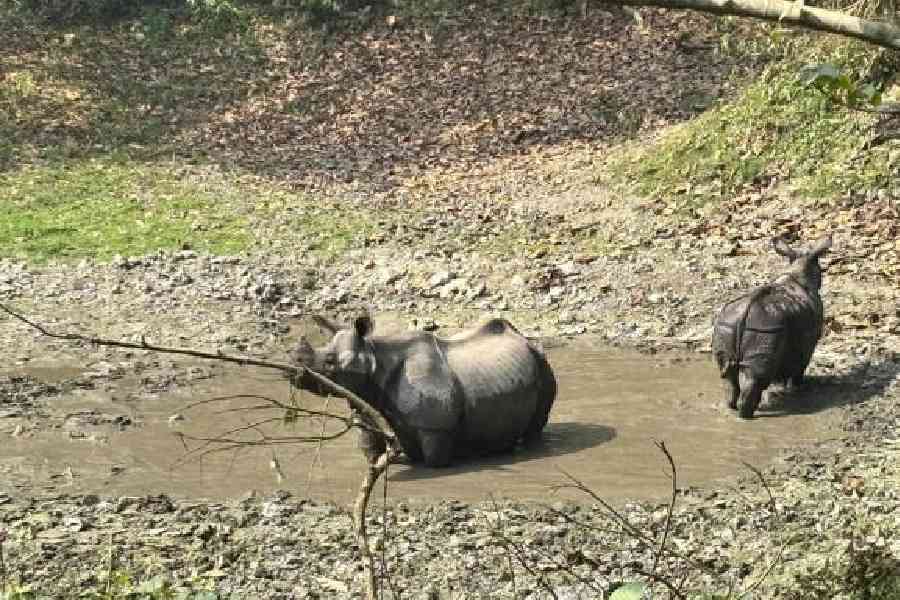The population of the great one-horned rhinoceros (Rhinoceros unicornis) in Bengal showed an increase in the two-day census held earlier this month at the rhino habitats in north Bengal.
The census revealed that Bengal has 392 rhinos currently. The figure was 347 in the last census in 2022.
“The census shows impressive results. The number of rhinos in Bengal stands at 392 (plus or minus six). It proves the state’s efforts to conserve these majestic creatures are bearing fruit,” said a senior forest department official.
On Tuesday, the department released the data on the rhino population within a fortnight of the census process.
The census report mentions around 331 rhinos at the Jaldapara National Park in Alipurduar and another 61 in the Gorumara National Park in neighbouring Jalpaiguri.
In 2022, there were 292 rhinos in Jaldapara and 55 in Gorumara.
The one-horned rhinos have been marked as a vulnerable species in the red data list of the International Union for Conservation of Nature (IUCN).
“The species requires dedicated conservation efforts. The rise in rhino population has proved we could successfully do it. The current data on population is impressive as in 2013, the rhino population was 229,” the forester added.
According to the data released by the department, among the rhinos in Gorumara, 60 to 62 per cent are adults, 10 to 12 per cent are sub-adults and 26-28 per cent are calves. The sex ratio is 1.59 females per one male.
In Jaldapara, the second largest habitat of rhinos in India after the Kaziranga National Park of Assam, around 70 to 72 per cent of the rhinos are adults, 8 to 9 per cent are sub-adults and 19 to 21 per cent are calves. Here, the sex ratio is 1.13 females per one male.
Sources in the department said that along with Jaldapara and Gorumara, teams also moved into the Chapramari Wildlife Sanctuary in Jalpaiguri and some other reserve forests of the district to count rhinos.
“The methodology used for counting was based on direct sightings. In all, the census was conducted across 396sqkm in the forests,” said an official.
Representatives of organisations working on wildlife conservation appreciated the rising rhino population of Bengal.
“It is indeed good news. But the forest department, residents on the fringes of forests and organisations and NGOs should work together to ensure that rhinos live safely in a proper habitat. This will help in the further growth of population in the coming years,” said Animesh Bose, the programme coordinator of the Siliguri-based Himalayan Nature and Adventure Foundation, a wildlife conservation organisation.











